Sunlight filtering through glass, leafy aromas and the gentle hum of pollinators – a well-planned greenhouse room is more than a place for seedlings; it’s a year-round sanctuary for people and plants alike. Whether your structure is a tiny lean-to or a stand-alone glasshouse big enough for dinner parties, thoughtful layout and décor choices determine how inviting, productive and energy-efficient it feels. Below you’ll discover twenty practical greenhouse room ideas that cover lounging, storage, climate hacks, companion planting, sustainable tech and more. Pick one concept or blend several, and watch your personal Eden flourish while you relax amid the greenery.
1. Create a Cozy Greenhouse Lounge
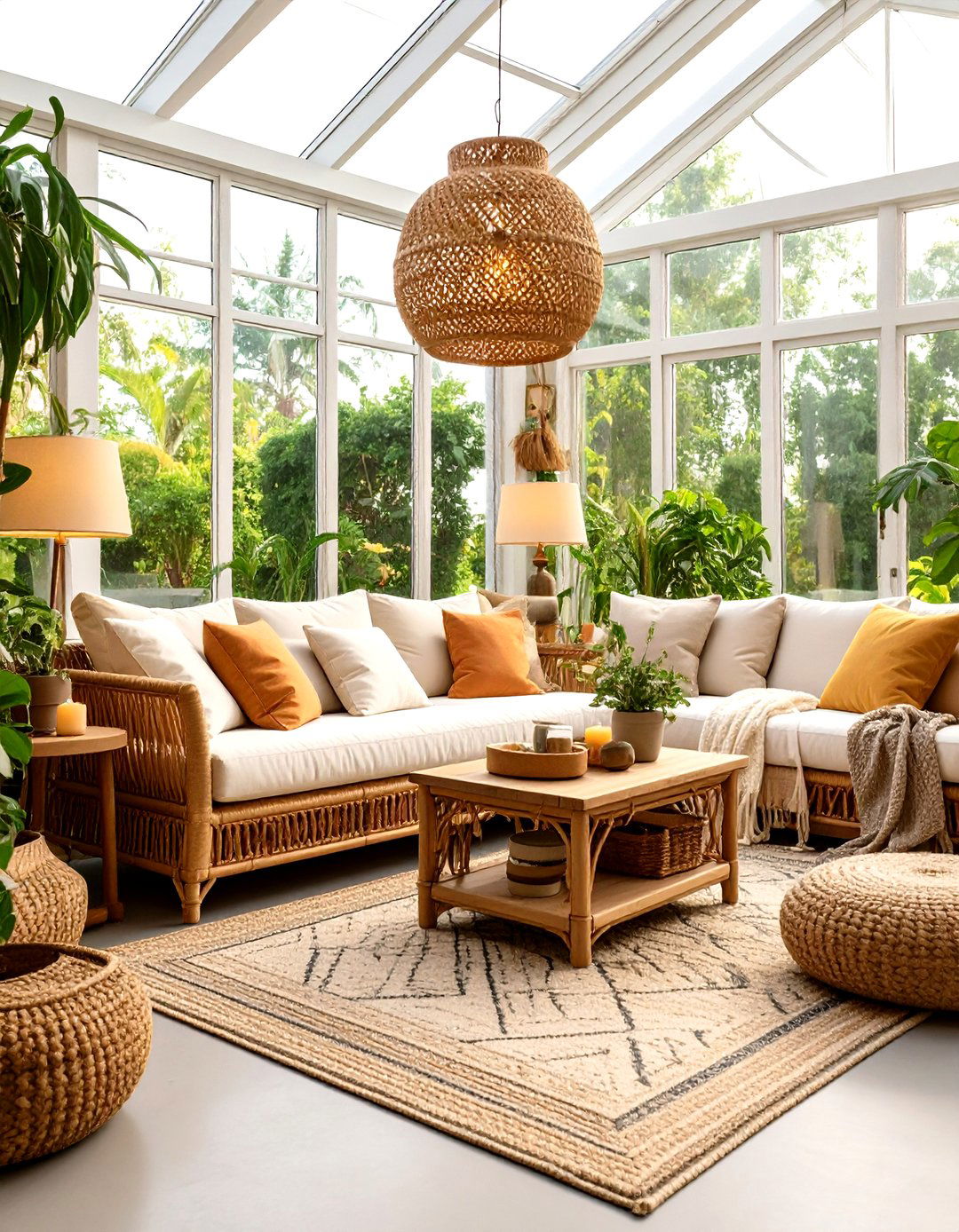
A cushioned rattan sofa, patterned rug and side tables instantly turn a greenhouse room into an all-weather lounge where you can sip tea among the vines. Furnishing the space the way you would a living room—think washable throws, a coffee table with storage for pruners and a moisture-resistant jute mat—encourages daily use beyond plant care. Choose materials that tolerate humidity such as wicker, teak or powder-coated metal, then add low-slung planters at seat height so foliage frames the conversation area. String a dimmable overhead lantern for soft evening glows, and you’ve created a micro-retreat that beckons year-round regardless of outside temperatures.
2. Go Vertical to Maximise Greenhouse Space
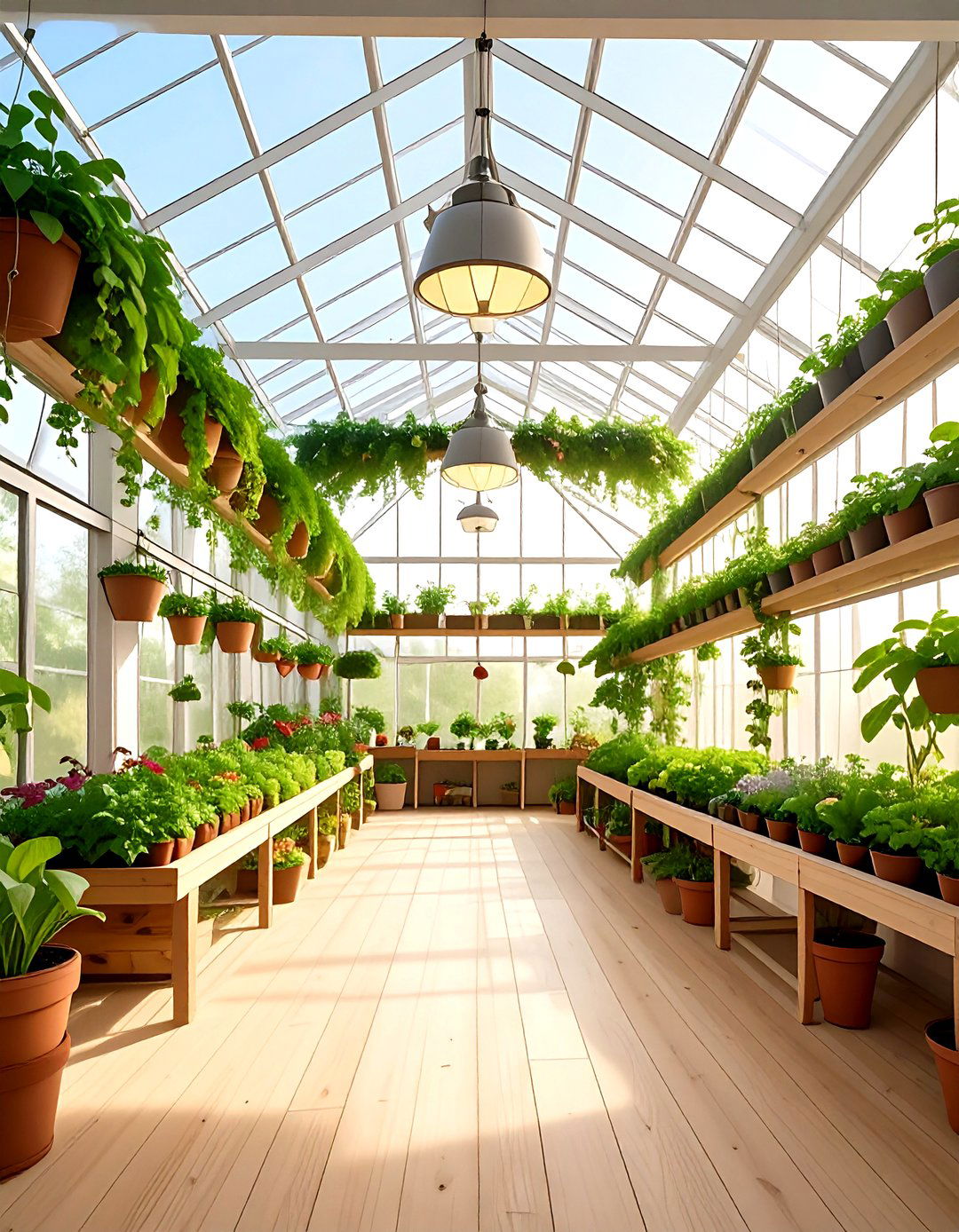
By installing trellised walls and hanging columns, a greenhouse room can climb upward instead of spreading out. Vertical gardening techniques such as wall-mounted planters, arched trellises and ceiling-hung baskets dramatically multiply planting area, making room for vining tomatoes, cucumbers or decorative pothos without crowding walkways. Position climbing crops on the sunniest side to maximise photosynthesis, and hang lighter herbs or strawberries where light is more diffuse. Remember to place drip trays or inline irrigation above benches to protect lower levels from runoff. The layered greenery doubles as living insulation, reducing temperature swings while delivering a lush, jungle-like atmosphere while maintaining humidity indoors.
3. Install a Purpose-Built Greenhouse Potting Bench
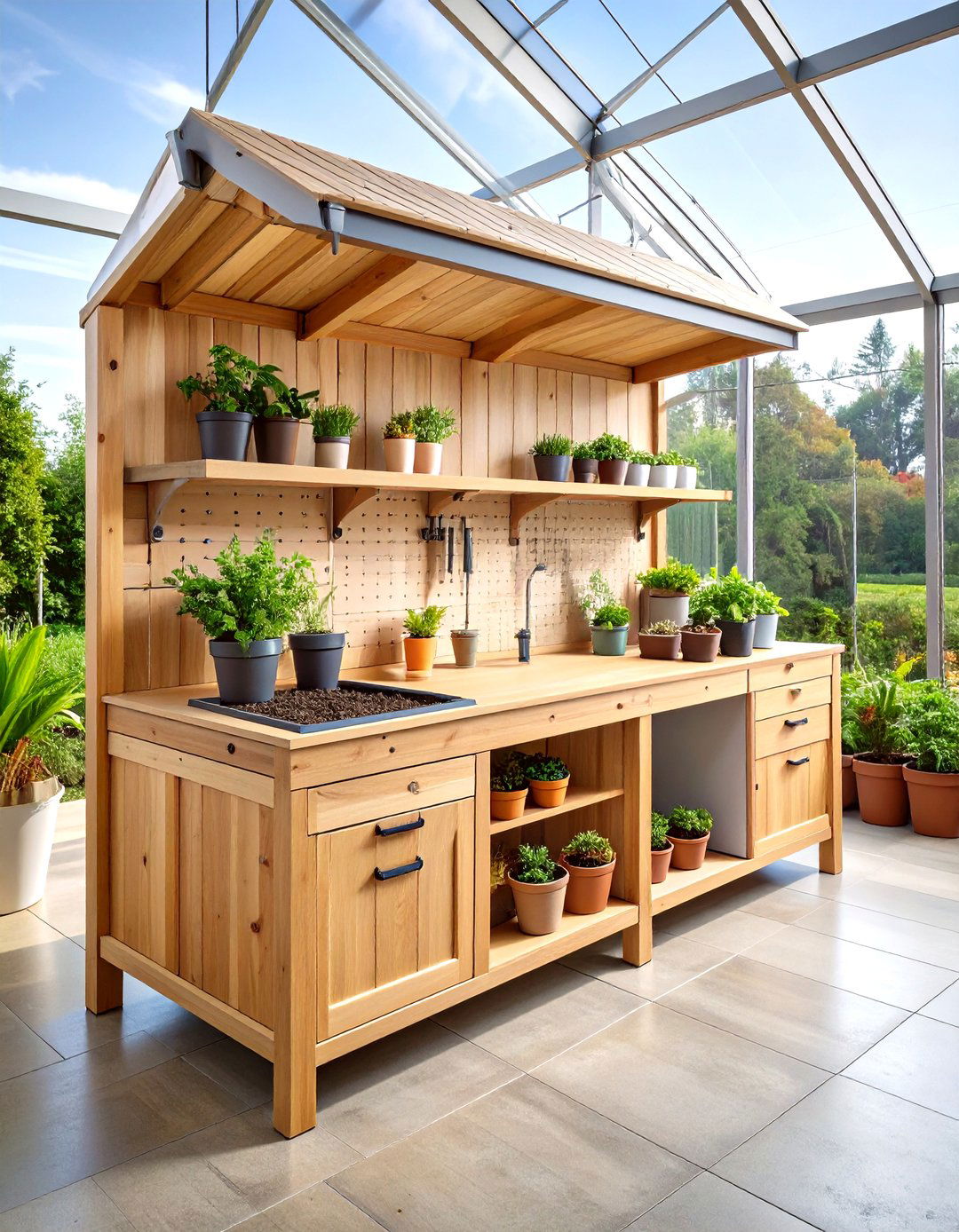
Take organisation up a notch by installing a dedicated potting-bench workstation along one wall of the greenhouse room. A waist-high surface built from rot-resistant cedar keeps transplanting comfortable, while an under-shelf stores compost bins, labels and gloves. Drill a recessed trough for catching spilled mix and attach a magnetic strip or pegboard for shears to prevent clutter. If you plan to propagate often, coat the bench with food-safe sealant and incorporate a shallow sink fed by collected rainwater for sustainable clean-up. Good ergonomics mean less bending, and neat tool placement ensures you spend more time nurturing seedlings, not searching for supplies.
4. Add a Reading Nook in the Greenhouse
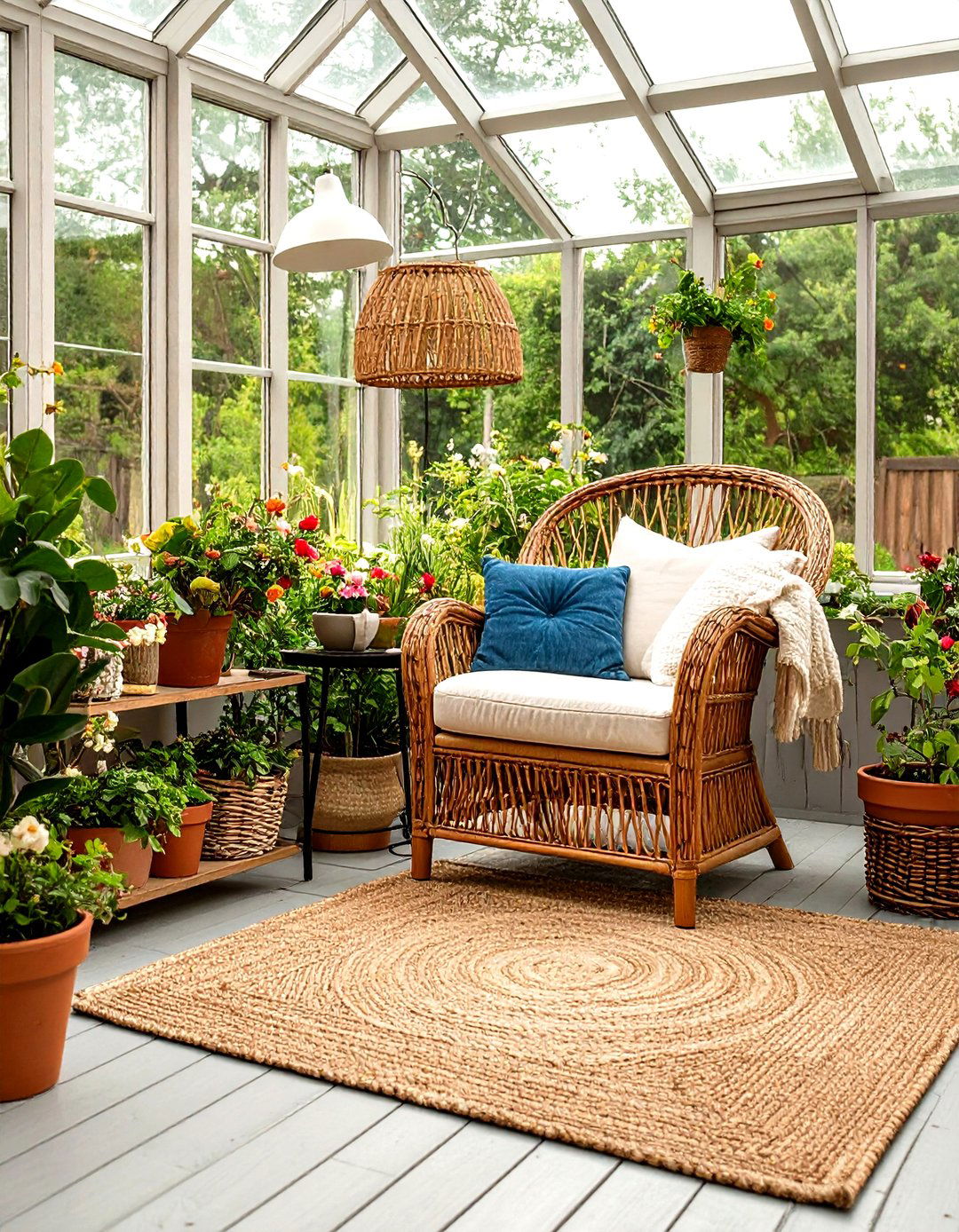
Consider carving a quiet reading nook beneath the tallest pane of your greenhouse room to escape with a novel while birds chatter outside. A reclaimed wicker chair layered with washable cushions, a narrow side shelf for books and an adjustable gooseneck lamp create a hygge corner that thrives on daylight yet feels cosy at dusk. Position fragrant citrus or jasmine pots nearby so breezes carry subtle perfume across the pages, and anchor the floor with a sealed jute rug to limit moisture wicking. The intimate setup invites mindful pauses, boosting wellbeing and encouraging longer observation of subtle plant changes daily.
5. Use Thermal-Mass Heating Inside the Greenhouse
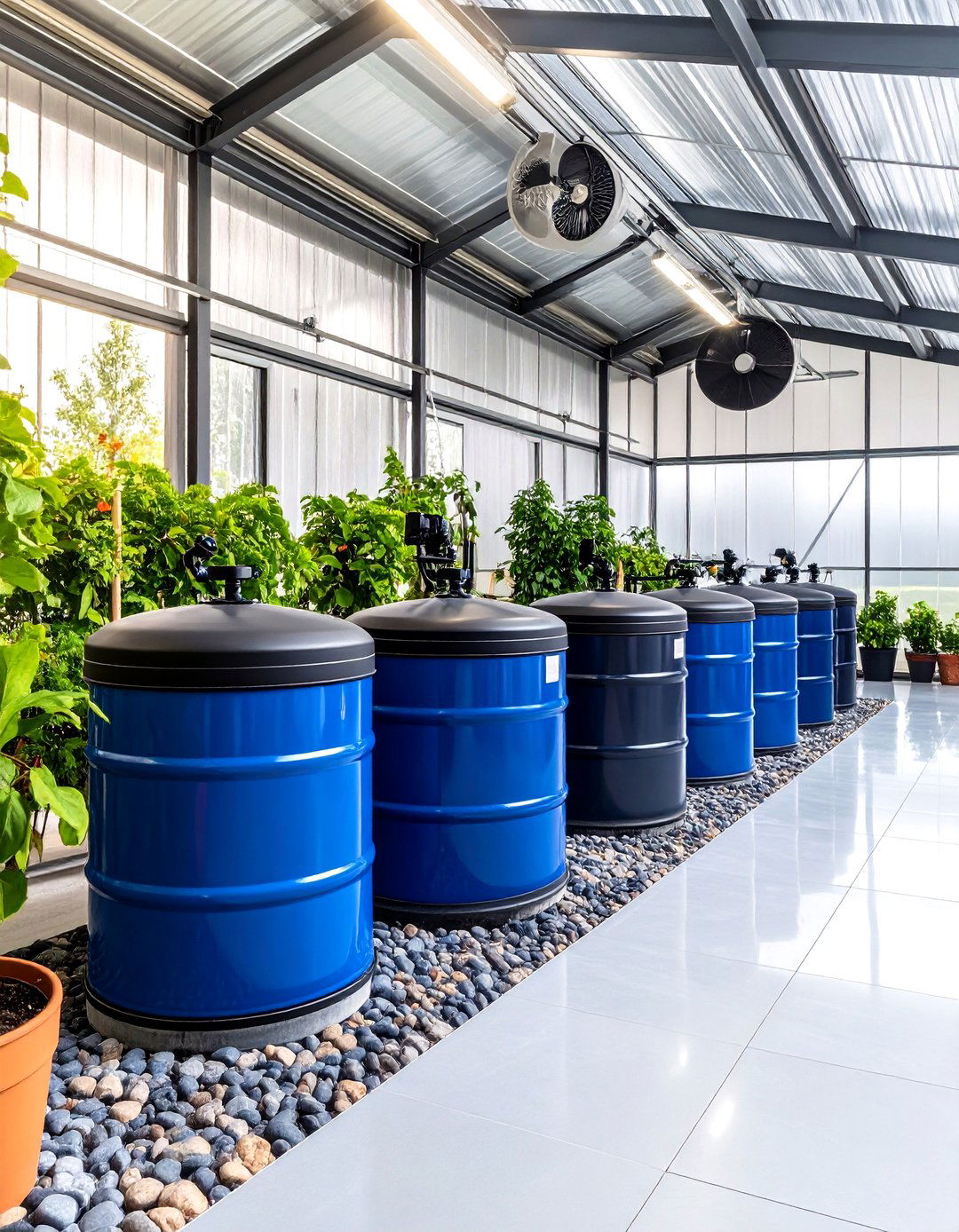
As winter approaches, thermal-mass ingenuity can keep a greenhouse room warm without skyrocketing bills. Stack dark-coloured water barrels or stone pavers along the north wall where they absorb solar energy by day and release it at night, smoothing temperature swings that stress tender foliage. According to passive-solar guidelines, water stores roughly twice the heat of concrete, so even a modest 200-litre column can raise overnight lows by several degrees. Pair the mass with reflective bubble insulation on glazing and a small circulation fan to spread heat evenly. This low-tech approach dovetails perfectly with renewable strategies or supplemental heaters when needed.
6. Hang Baskets for a Floating Greenhouse Canopy
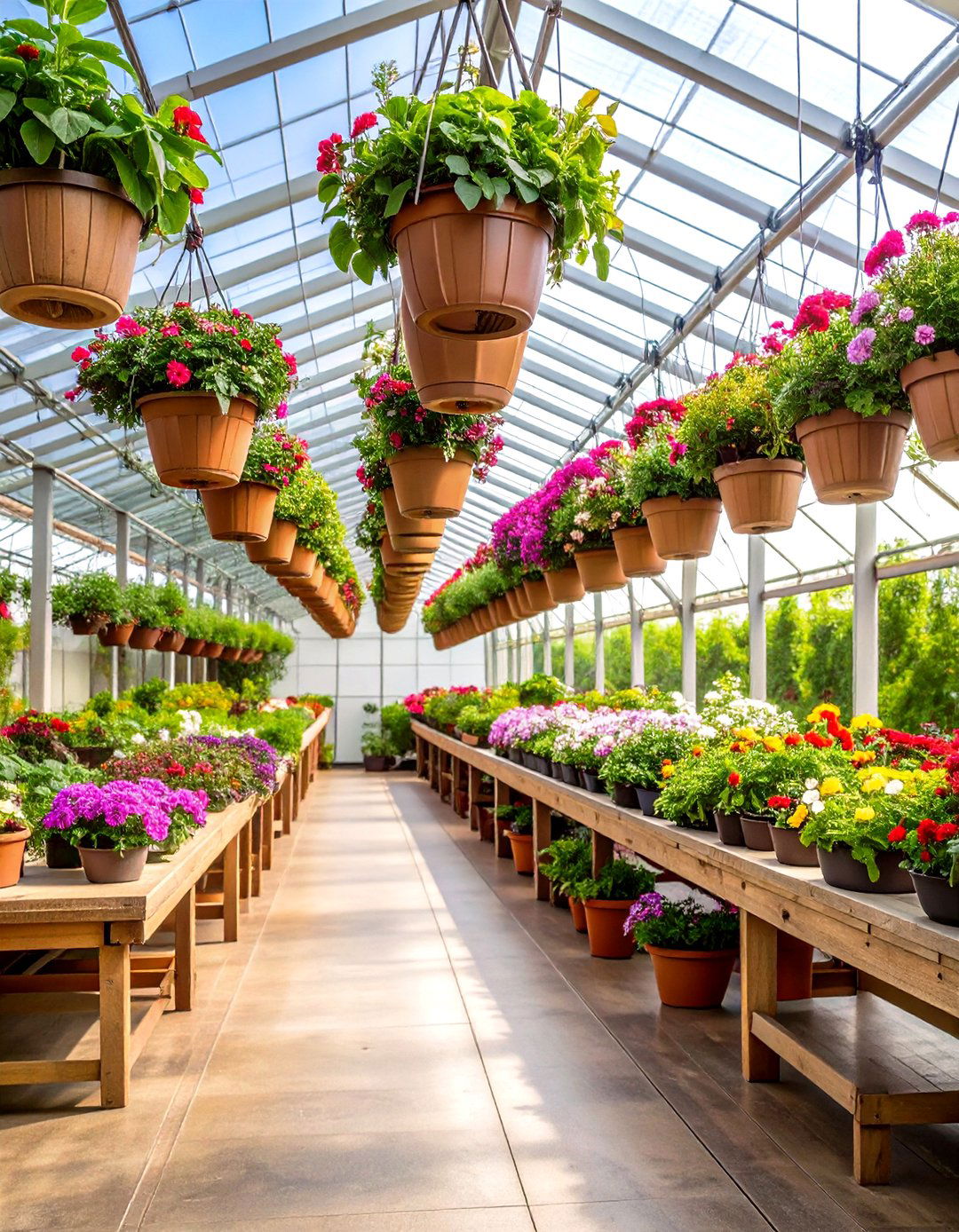
With a ceiling grid of sturdy hooks, a greenhouse room ceiling becomes an aerial garden of cascading foliage. Suspend lightweight plastic or coir-lined baskets filled with strawberries, ferns or trailing nasturtiums to free counter space and create layered shade for understory seedlings. To simplify watering, run a loop of micro-drip tubing through the rafters and attach pressure-compensating emitters just above each pot; excess drips nourish floor beds. The moving curtain of leaves also disrupts flying pests by confusing their flight paths, an organic bonus. Rotate plants monthly for balanced light, and remember to adjust basket height as vines lengthen gracefully.
7. Automate Greenhouse Climate with Smart Controls
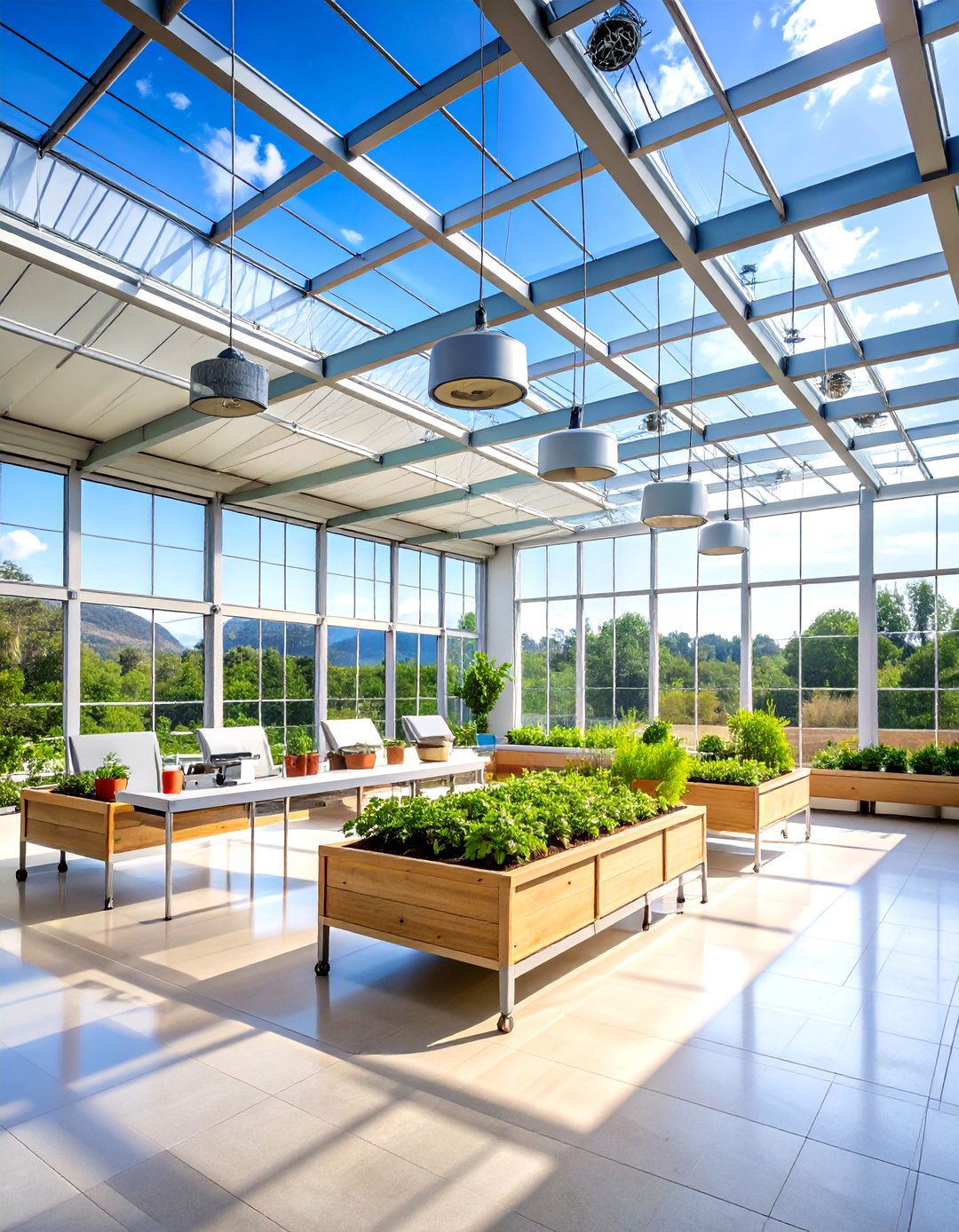
Certainly, a smart micro-climate kit can transform a greenhouse room from guesswork to precision gardening. Wireless temperature, humidity and CO₂ sensors relay real-time data to your phone, allowing you to trigger exhaust fans or open roof vents automatically when thresholds are exceeded. Pairing these controls with a small oil-filled heater or infra-red panel provides steady night warmth without scorching leaves, while summertime shade cloth deploys on schedule to prevent heat stress. Logging data over weeks reveals subtle trends—like how afternoon watering spikes humidity—that help refine routines for healthier growth and lower energy costs, delivering measurable gains across the entire year’s cycle.
8. Showcase Plants on Tiered Greenhouse Shelving
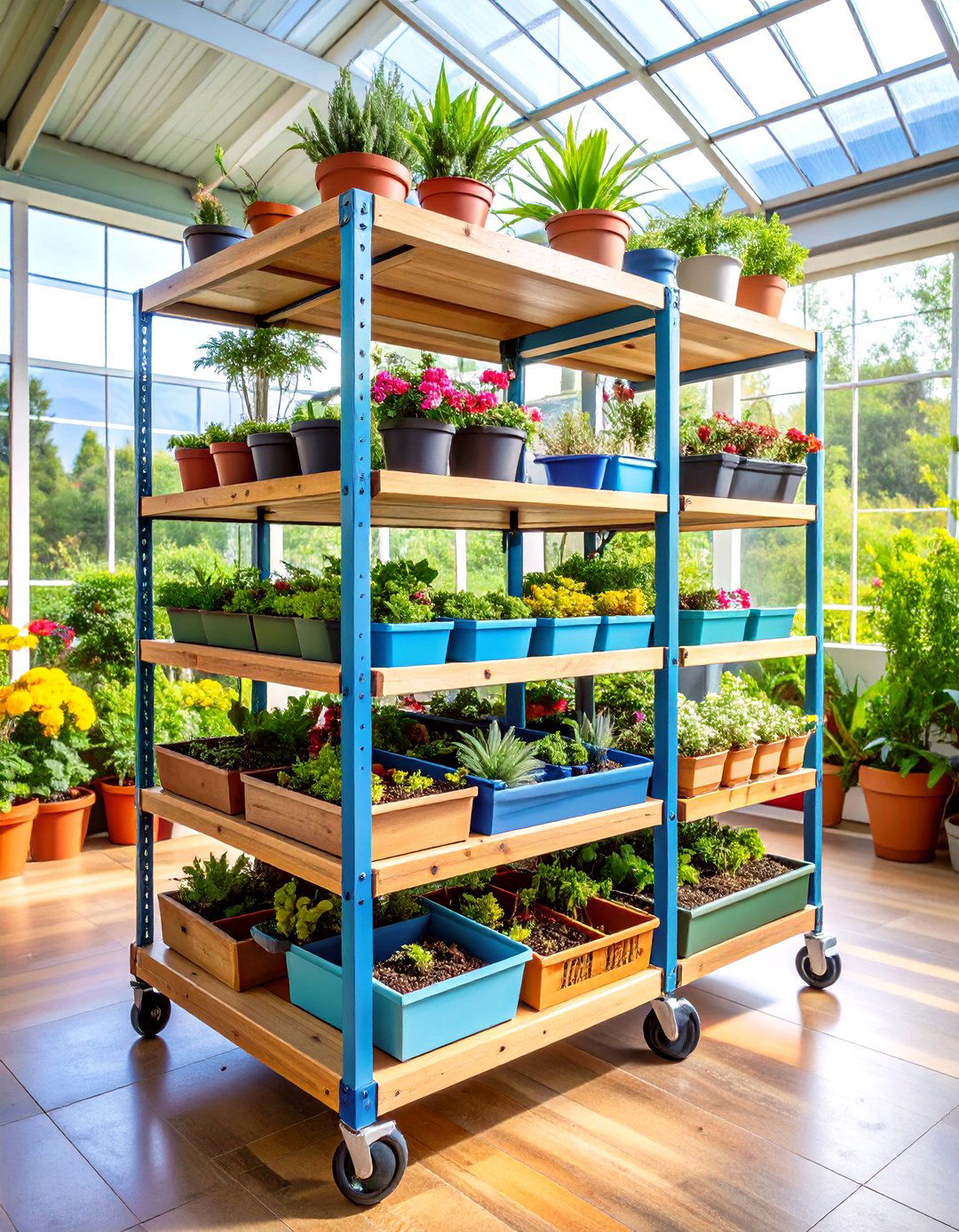
Looking to tame pot chaos? Multi-level shelving systems give a greenhouse room order and style. Stagger wooden or galvanized steel shelves of varying depths so large specimen plants perch at floor level while tiny succulents occupy eye-level cubbies. Style planters in odd-number groupings, interspersing decorative watering cans or framed botanical prints to create visual rhythm that rivals any indoor bookcase. Removable trays underneath each shelf simplify seasonal clean-outs, and attaching caster wheels to the entire rack lets you roll sections aside for deep cleaning. Well-curated displays showcase plant diversity, inspire regular pruning and keep valuable bench space free for propagation.
9. Set Up a Greenhouse Dining Corner

To elevate weekend brunch, set up a compact dining zone right inside the greenhouse room. A foldable bistro table paired with two rust-proof chairs occupies little footprint yet offers an immersive garden-to-table experience. Cluster potted herbs like mint and chives within arm’s reach so guests can garnish dishes straight from the source, and string fairy lights overhead to extend meals into golden twilight. Keep a portable induction hob nearby for tea or fondue, but store it in a weatherproof cabinet when not in use. Sharing food amid photosynthesising companions turns everyday meals into sensory celebrations. Moments like these linger in happy memory.
10. Build a Lean-To Kitchen Greenhouse

Unlike stand-alone structures, a lean-to greenhouse room anchored against the kitchen wall shortens the food-to-table journey to mere steps. The existing house captures radiant heat and blocks prevailing winds, reducing construction costs and winter energy needs. Install a narrow French door or pass-through window so cut herbs travel straight to saucepans, and fit slimline aluminium glazing that aligns with roof eaves for seamless aesthetics. Because one side is opaque, paint the interior brick or siding white to bounce sunlight deeper into the space, and mount mirrors behind shade-tolerant plants to amplify brightness. This compact footprint proves valuable for urban gardeners seeking high yield.
11. Turn the Greenhouse into a Wellness Retreat
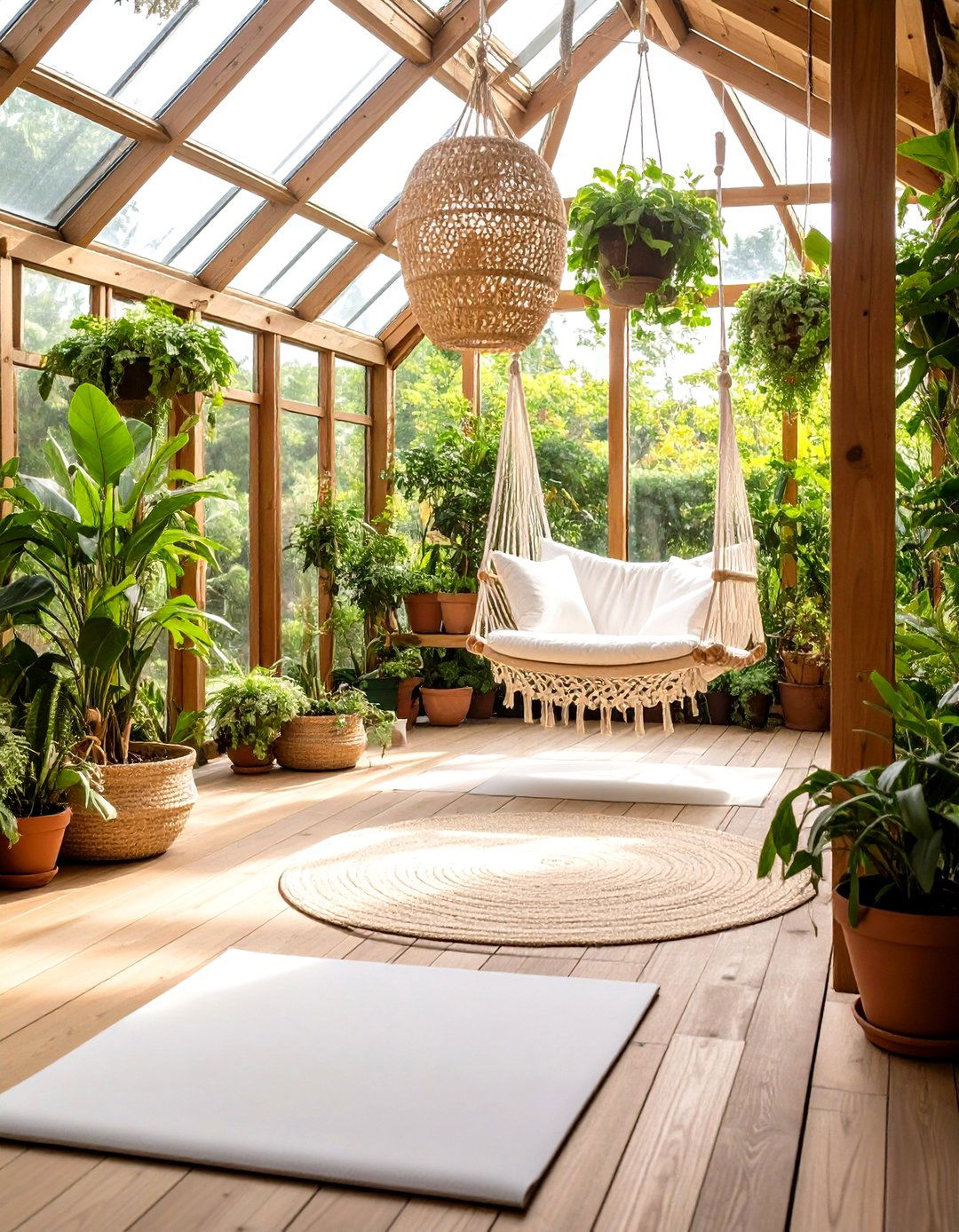
Surprisingly, warm humidity and filtered light make a greenhouse room an ideal yoga or meditation studio. Lay interlocking cedar tiles to create a stable, non-slip floor, then roll out moisture-resistant mats before dawn when leaf silhouettes paint the glazing. Essential-oil diffusers are often redundant here; pots of rosemary or eucalyptus release natural aromatherapy during gentle stretches. Incorporate a small tabletop fountain to mask external noise and increase ambient humidity for tropical specimens. After practice, settle into a hanging chair for herbal tea brewed from your own lemon balm. Blending wellness with horticulture encourages consistent self-care and deepens connection to everyday ecosystems.
12. Construct a Reclaimed-Window Mini Greenhouse
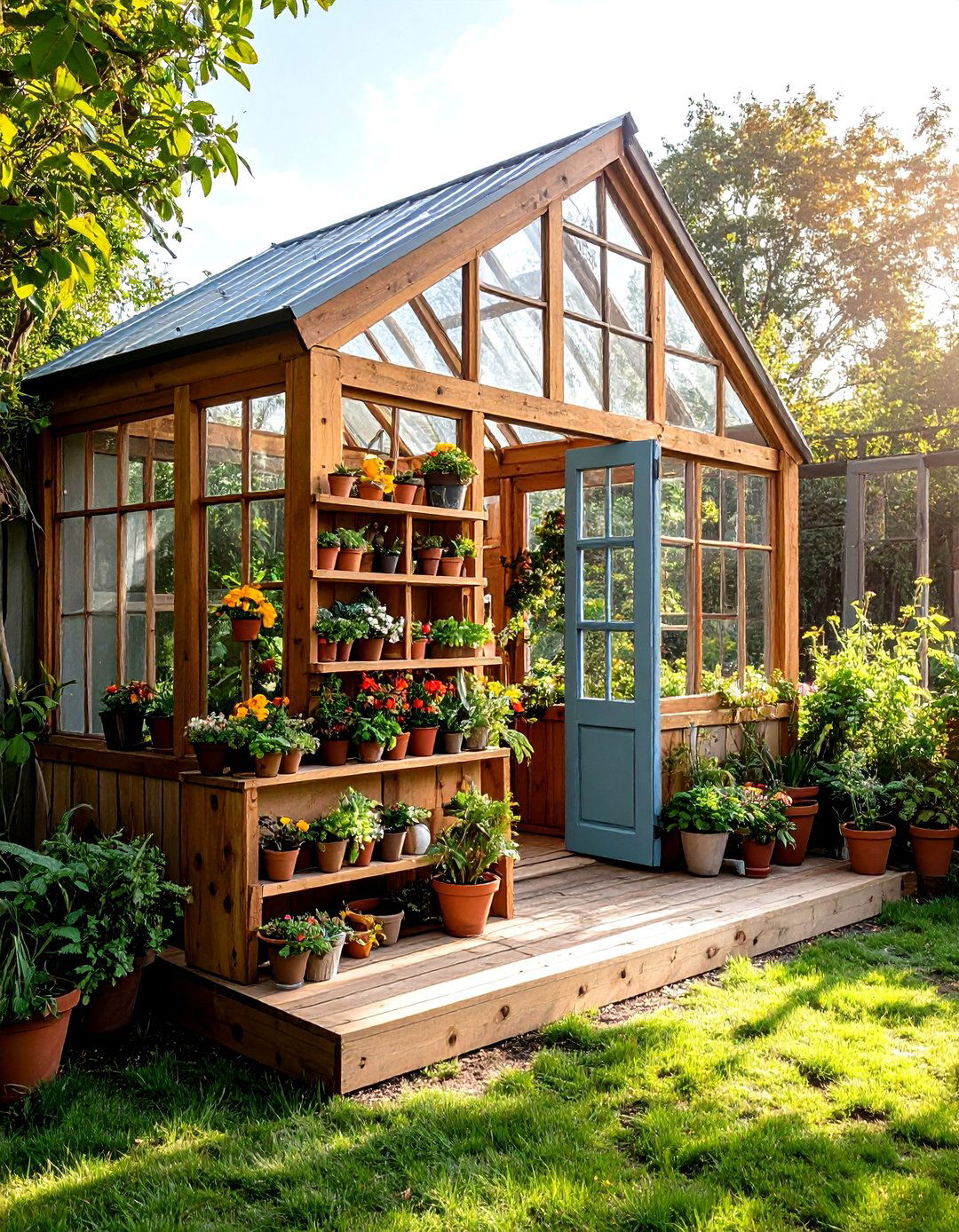
Looking for budget charm? Building a miniature greenhouse room from salvaged windows offers vintage character and real thermal benefits. Old casements—often free on resale sites—come pre-weathered, reducing glare and adding quirky muntin patterns that cast lace-like shadows on seedlings. Assemble frames onto a simple lumber skeleton, then incorporate an antique door for ventilation; older wood species such as heart pine frequently outlast modern softwoods when protected with eco-friendly sealants. Interior shelves cut from pallet boards keep costs low and aesthetics consistent. Families report that hands-on construction fosters gardening enthusiasm in children who later help seed trays and water beds daily.
13. Style a Rustic Farmhouse Greenhouse Interior
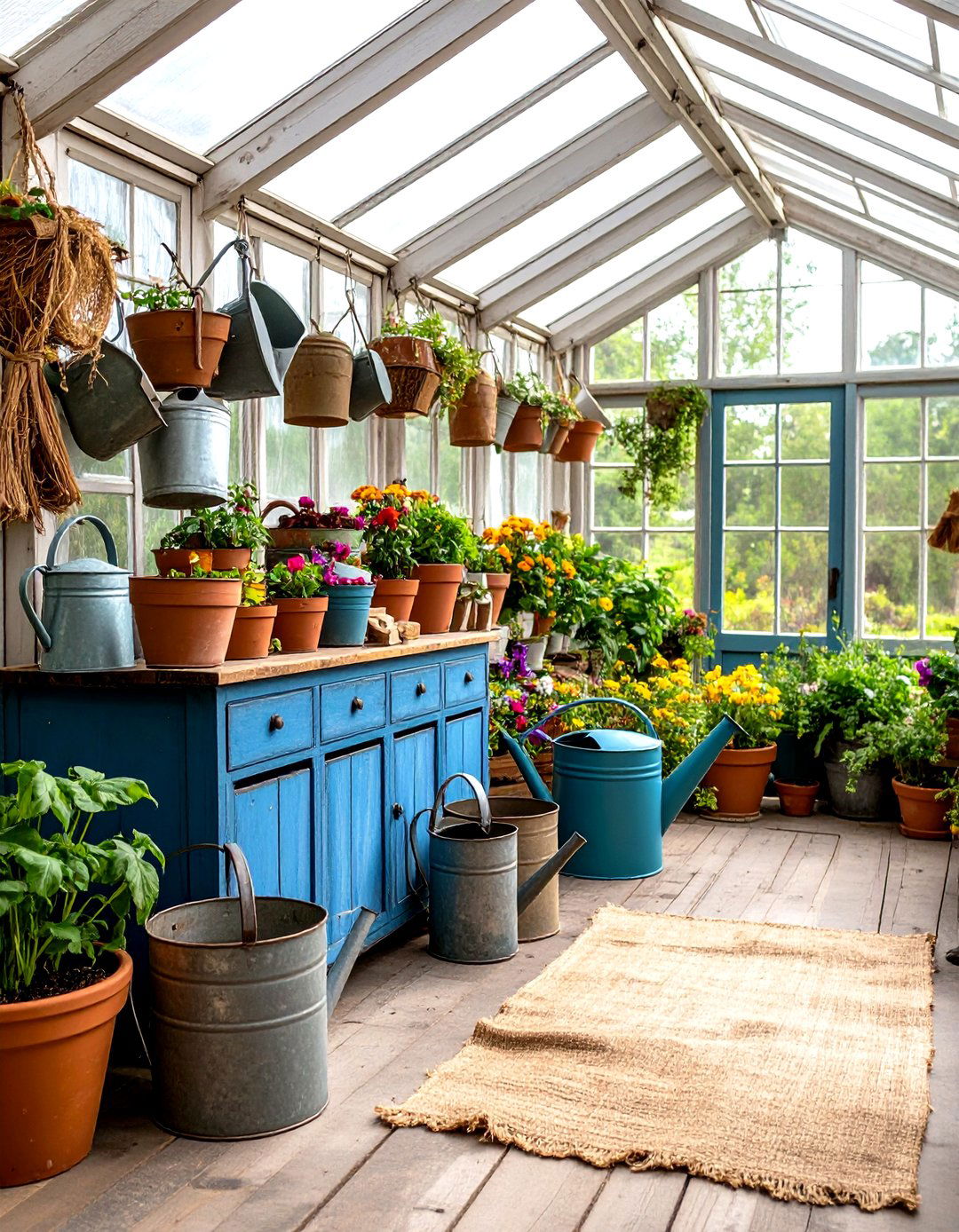
What better way to soften glass walls than with rustic farmhouse accents inside the greenhouse room? Upcycle galvanized watering cans as lamp bases, hang enamel colanders as planters and drape reclaimed burlap along staging benches for texture. A distressed potter’s cabinet not only organizes fertilizers but also establishes a nostalgic focal point. Subtle pops of color—sage green doors or a powder-blue window frame—add whimsy without overshadowing greenery. When humidity rises, these hard-wearing materials shrug off moisture far better than delicate fabrics. Blending old-world charm with live foliage yields a timeless space guests assume has existed for generations from the start.
14. Grow Winter Herbs under Greenhouse LEDs

After frost settles outside, an indoor greenhouse herb garden satisfies culinary cravings without supermarket trips. Sow cool-season favourites like parsley, chervil and cilantro in deep trays, and mount full-spectrum LED bars 30 cm above foliage to sustain strong growth during short days. Many LEDs now link to Bluetooth timers, ensuring plants receive 14-hour photoperiods plus gradual dawn-dusk dimming that reduces transplant shock. Keep night temperatures near 15 °C with an oil-filled heater and open vents briefly at midday to flush stale air and prevent fungal buildup. Fresh sprigs harvested mid-winter lift stews and sauces while filling the room with uplifting fragrance daily.
15. Introduce Hydroponics for Water-Smart Greenhouse Harvests
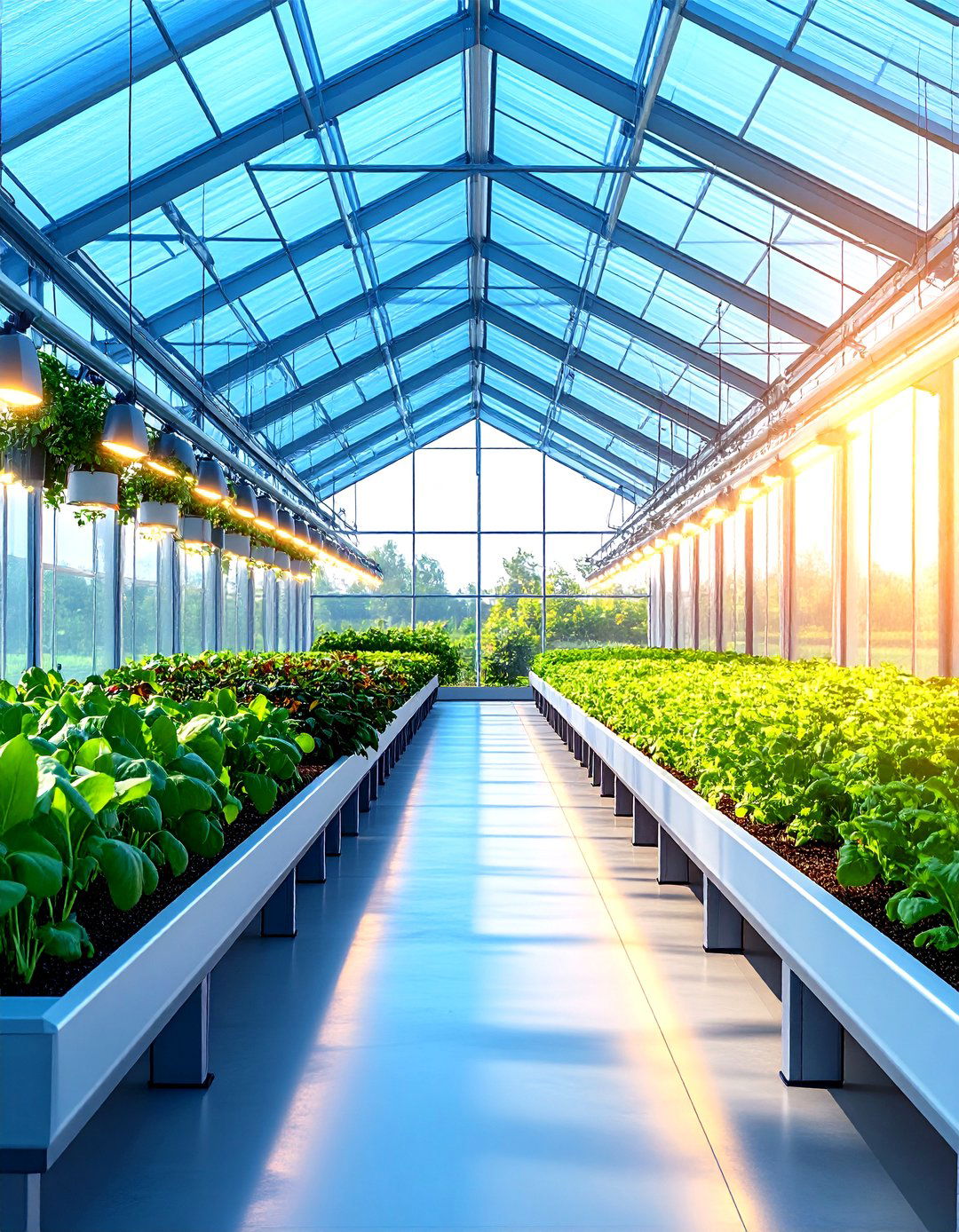
As water efficiency becomes paramount, introducing a simple hydroponic line transforms a greenhouse room into a soil-free lab of abundance. A DIY downspout NFT channel perched on a waist-high shelf circulates nutrient solution through seedling holes, returning excess to a reservoir below via gravity. This closed loop uses up to 90 % less water than pot culture and delivers oxygen directly to roots, accelerating harvest cycles. Add a small submersible pump and install a low-cost Raspberry-Pi board for pH, EC and temperature logging, making data-driven adjustments effortless. Greens grown this way stay remarkably clean, reducing kitchen prep and compost waste too.
16. Design a Child-Friendly Greenhouse Learning Area
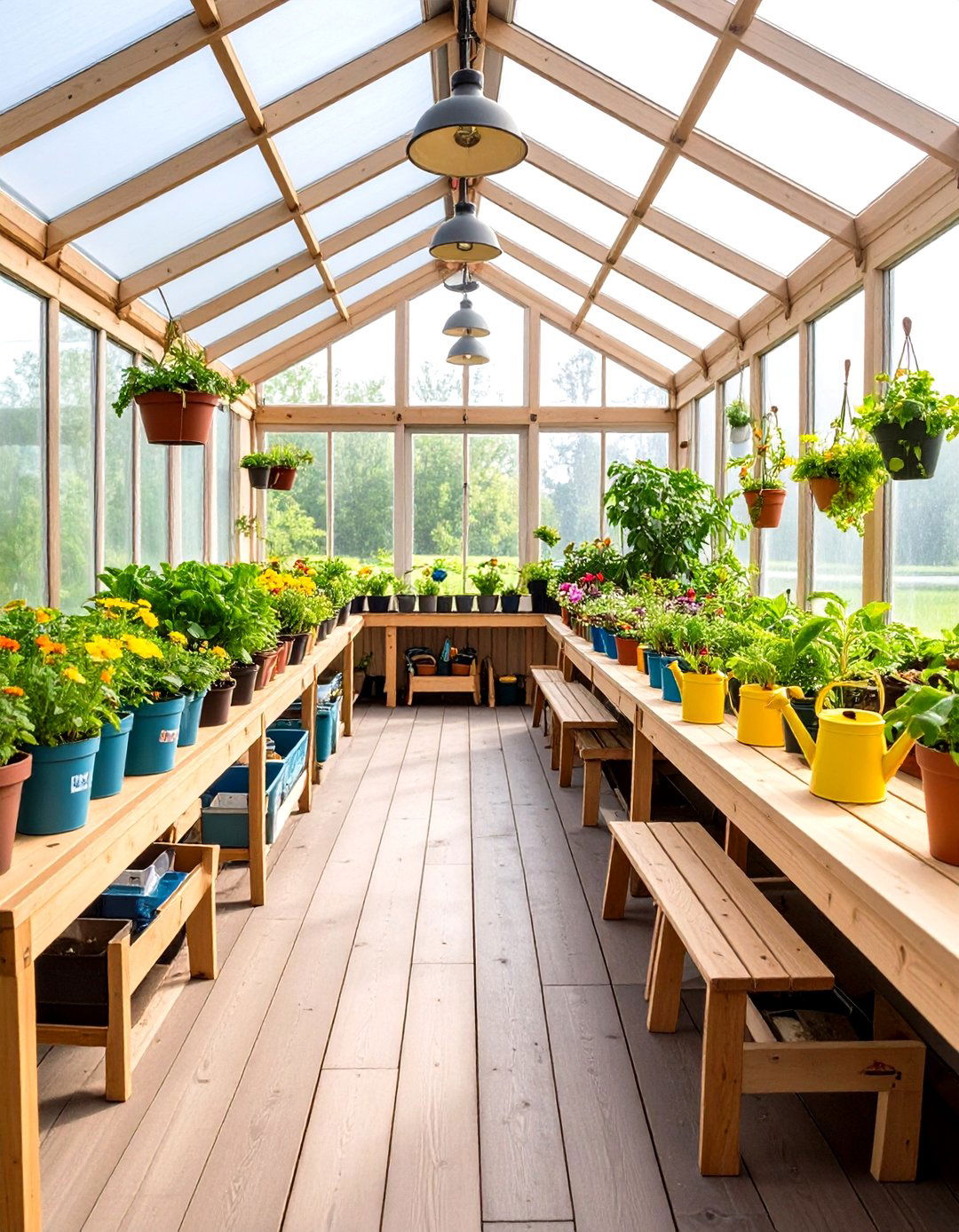
One imaginative twist is converting a corner of the greenhouse room into a child-friendly discovery zone. Position low benches at kid height covered with shallow seed trays so youngsters can press tiny fingers into warm soil and watch seedlings emerge. Post laminated picture labels showing growth stages and hang a simple thermometer they can record daily to teach charting skills. Add a butterfly-friendly planter of dill and nasturtiums for insect observation, and store pint-size watering cans on hooks within reach. Hands-on tasks immerse children in biology while giving adults welcome helpers for routine chores, through every season of wonder together.
17. Add an Aquaponic Ecosystem to the Greenhouse
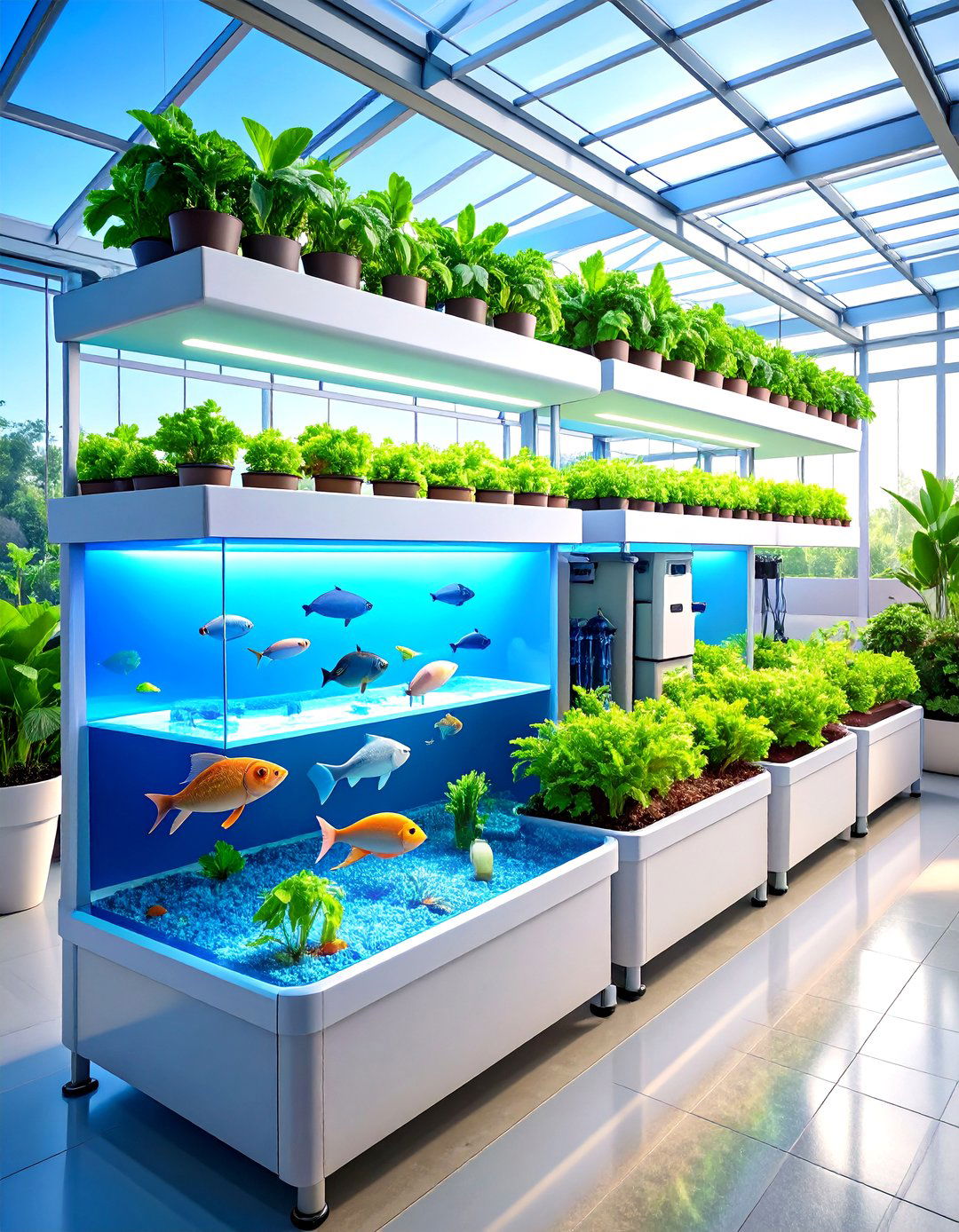
Another eco-upgrade pairs fish and vegetables by introducing a compact aquaponic loop within the greenhouse room. A waist-height tank stocked with tilapia or goldfish pumps nutrient-rich water to a gravel grow-bed where leafy greens polish it clean before it returns to the fish. This symbiosis slashes fertiliser purchases and creates an engaging focal point as children watch roots dangle above shimmering scales. Choose a system size your floor can support—water weighs roughly one kilo per litre—and secure backup power for aeration in case of outages. The integrated ecosystem boosts sustainability metrics while transforming routine plant checks into mesmerising aquarium visits.
18. Decorate the Greenhouse with Seasonal Lighting

Shortly before holidays, dressing your greenhouse room with seasonal décor keeps spirits high even when daylight fades early. Wind LED fairy lights along rafters and drape lightweight paper lanterns among orchids for twinkling ambience that won’t overheat foliage. Swap everyday planters for vintage enamel buckets painted in festive hues, and tuck miniature evergreens or poinsettias at entry points for a pop of colour. Battery-powered candles inside mason jars create safe, flicker-free centrepieces on benches or dining tables. Because decorations are temporary, choose items that store flat and resist humidity so re-using them next year becomes effortless and eco-friendly for everyone.
19. Practice Companion Planting for Greenhouse Pest Control
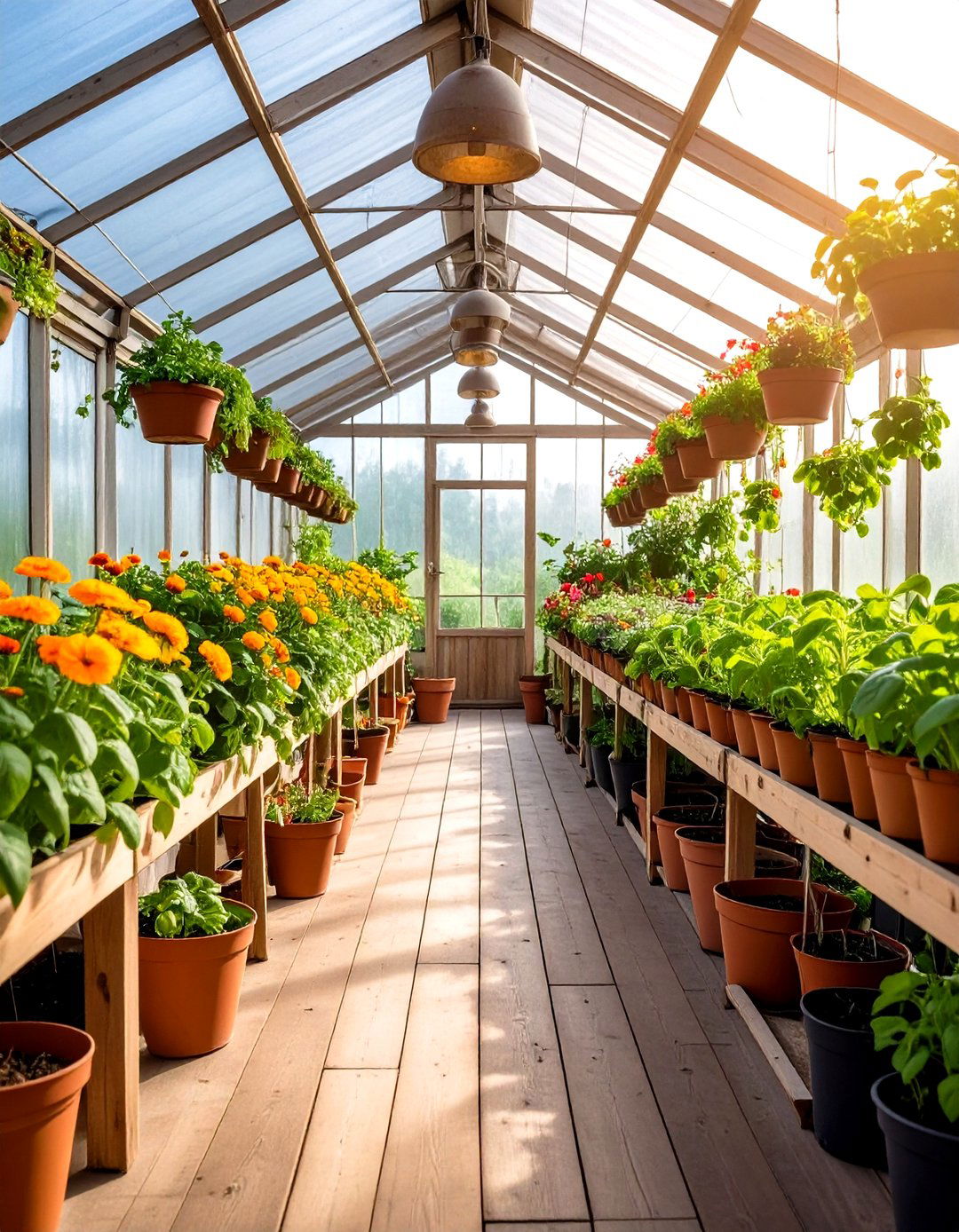
Owing to their aromatic oils, strategic companion plants turn a greenhouse room into its own pest-management system. Marigolds emit compounds that repel nematodes and whiteflies, while nasturtiums act as sacrificial trap crops, luring aphids away from valued tomatoes. Interplanting basil beneath pepper buckets confuses flea beetles and supplies kitchen flavour in one stroke. Clustering these guardians also invites predatory hoverflies and ladybirds that patrol leaves for eggs. Remember spacing: place marigolds within 30 cm of their wards yet nasturtiums at least a metre distant so pests congregate there first. This living shield reduces chemical sprays and encourages biodiversity under glass naturally.
20. Embrace Solar Tech for a Net-Zero Greenhouse
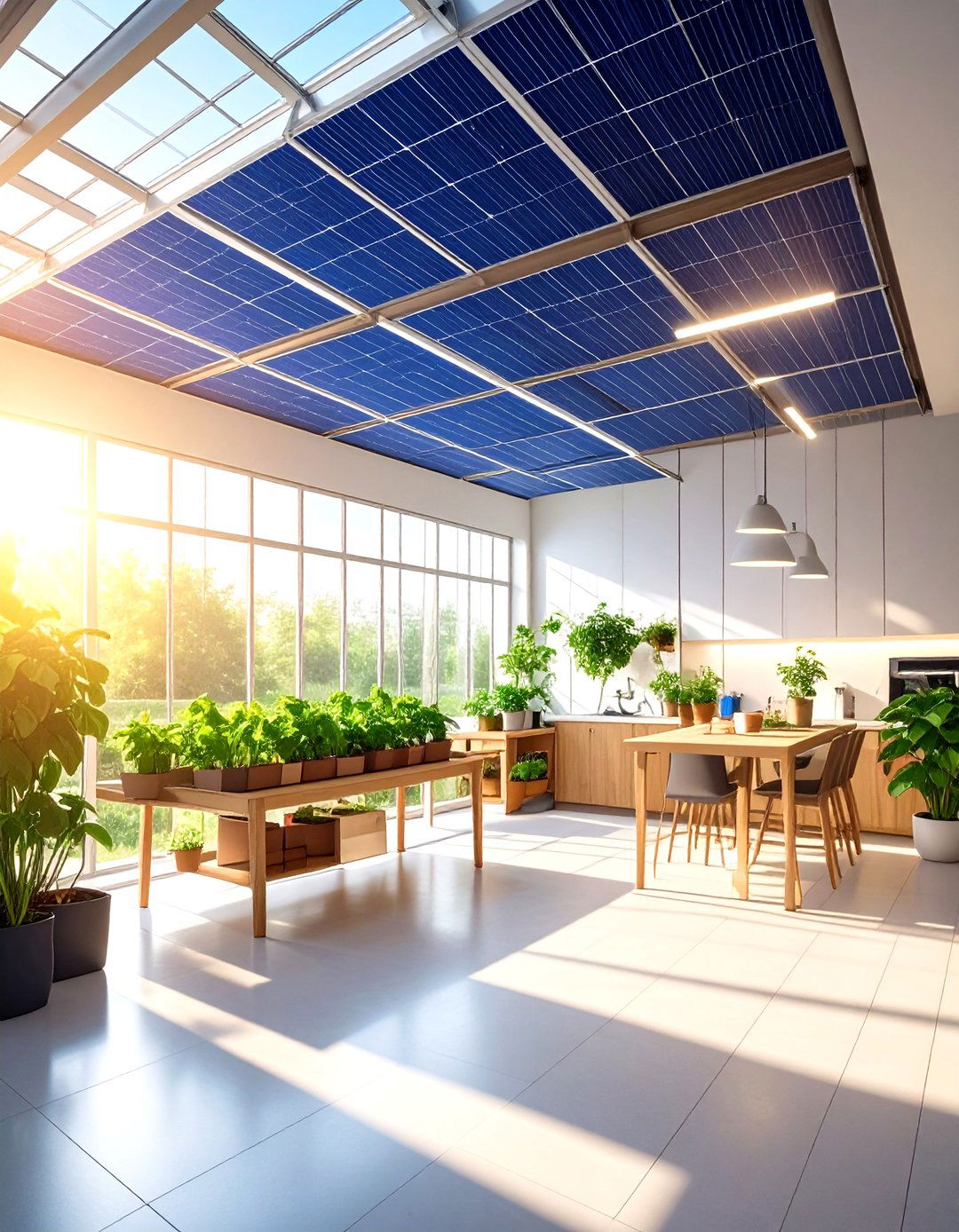
Finally, powering a greenhouse room with integrated solar technology future-proofs both plants and budget. Semi-transparent photovoltaic roofing replaces conventional panes, harvesting electricity while still admitting photosynthetically active light, and studies show certain crops even grow faster under filtered spectra. Wall-mounted panels or slim vertical arrays along southern facades can generate surplus energy for fans, pumps and night-time LED lighting, pushing operations toward net-zero status. Couple panels with a lithium-iron-phosphate battery so excess midday power runs heaters after sunset, flattening temperature curves. Initial installation costs continue to fall, and many regions offer incentives that shrink payback periods dramatically for small growers.
Conclusion:
Greenhouse rooms invite a life lived closer to chlorophyll. Whether you outfit yours as a lounge, lab, classroom or off-grid powerhouse, the concepts above prove that thoughtful design magnifies comfort, yield and sustainability in equal measure. Vertical structures liberate floor space, thermal barrels moderate climate, while sensor-driven vents and solar roofs slash utility bills. Even tiny flourishes—string lights, a reading chair, companion basil—stack benefits that ripple through plant health and human happiness. Let these twenty ideas germinate in your imagination, adapt them to your budget and climate, and watch as ordinary glass walls expand into a flourishing ecosystem you’ll never want to leave, no matter the season or weather outside.


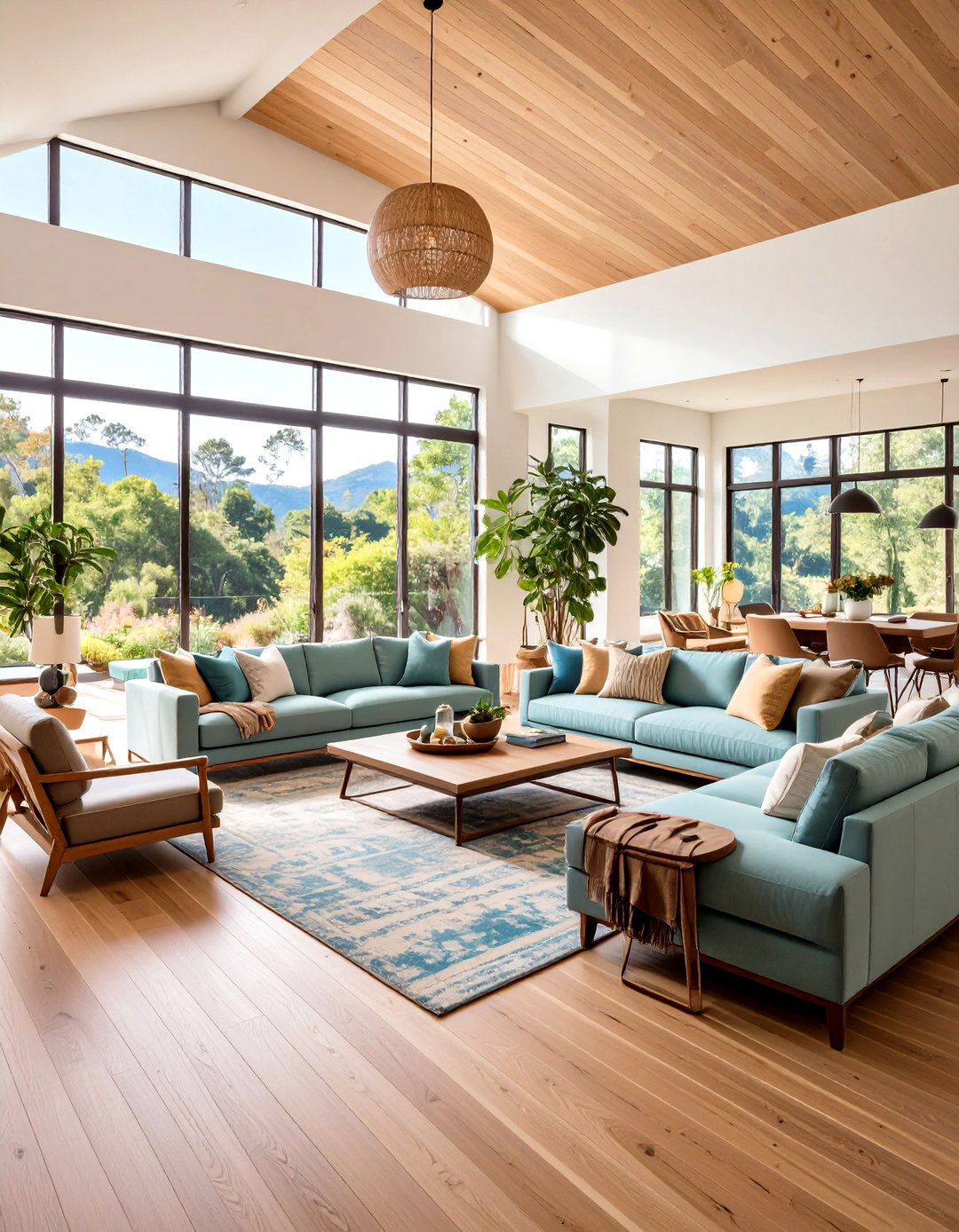



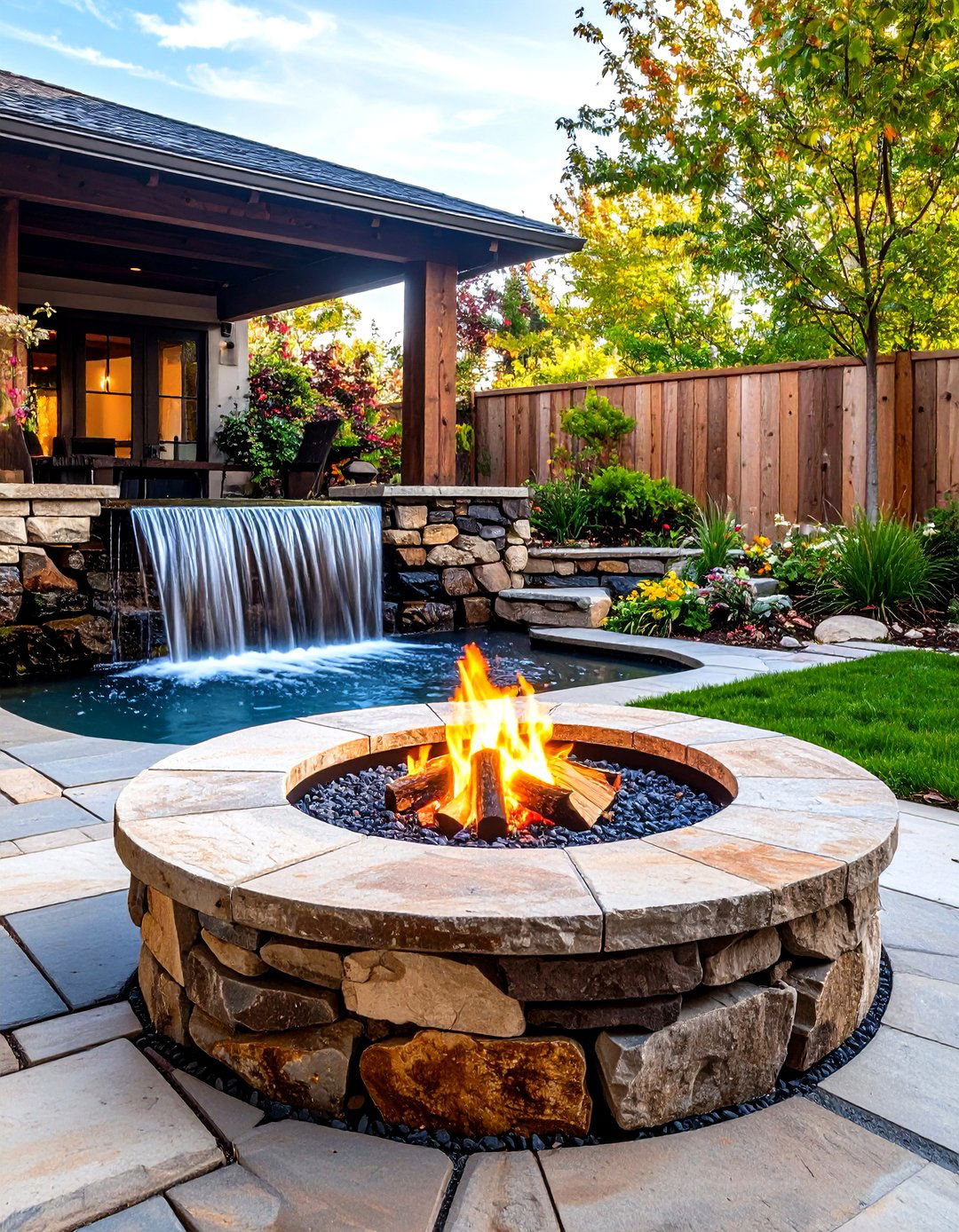



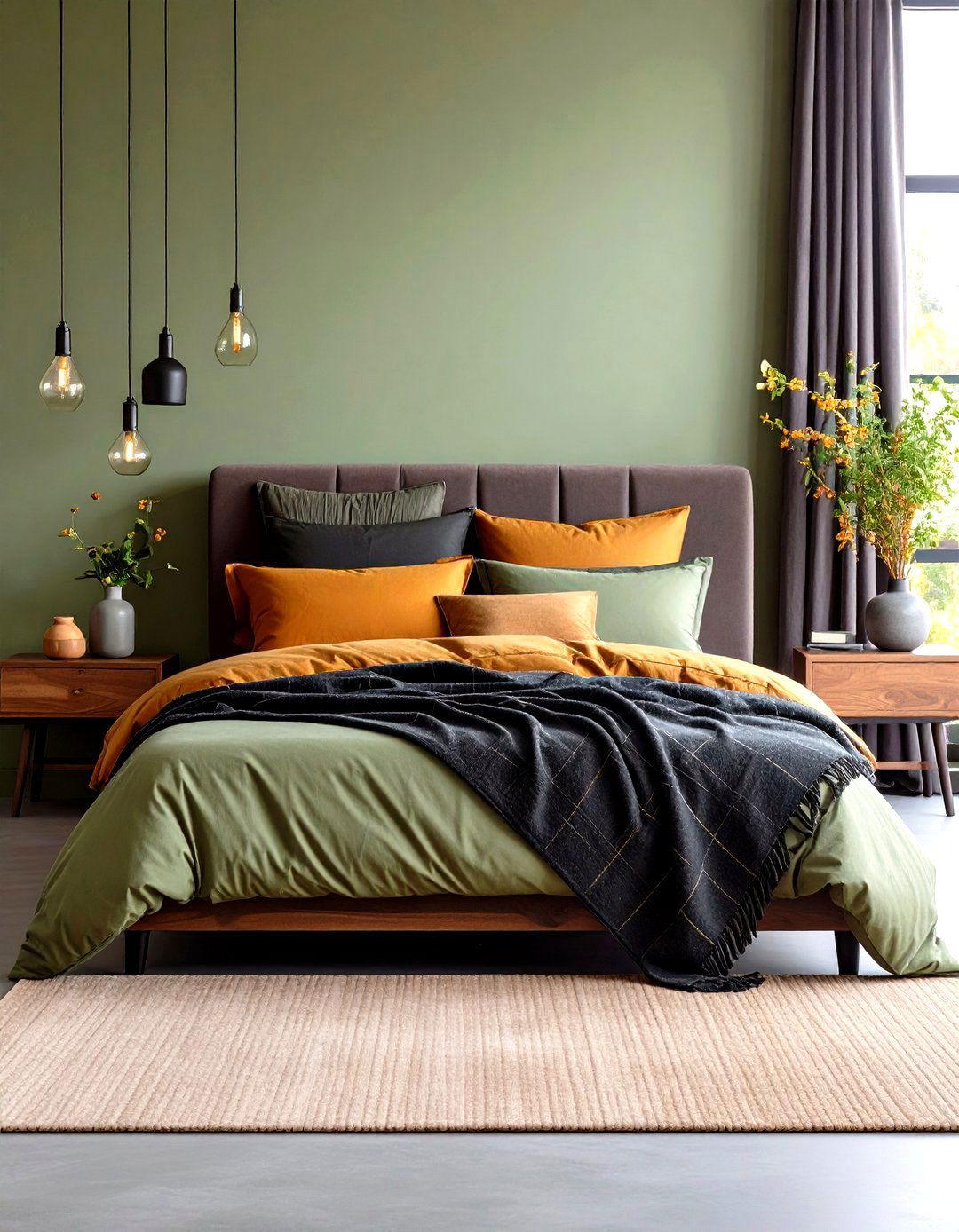

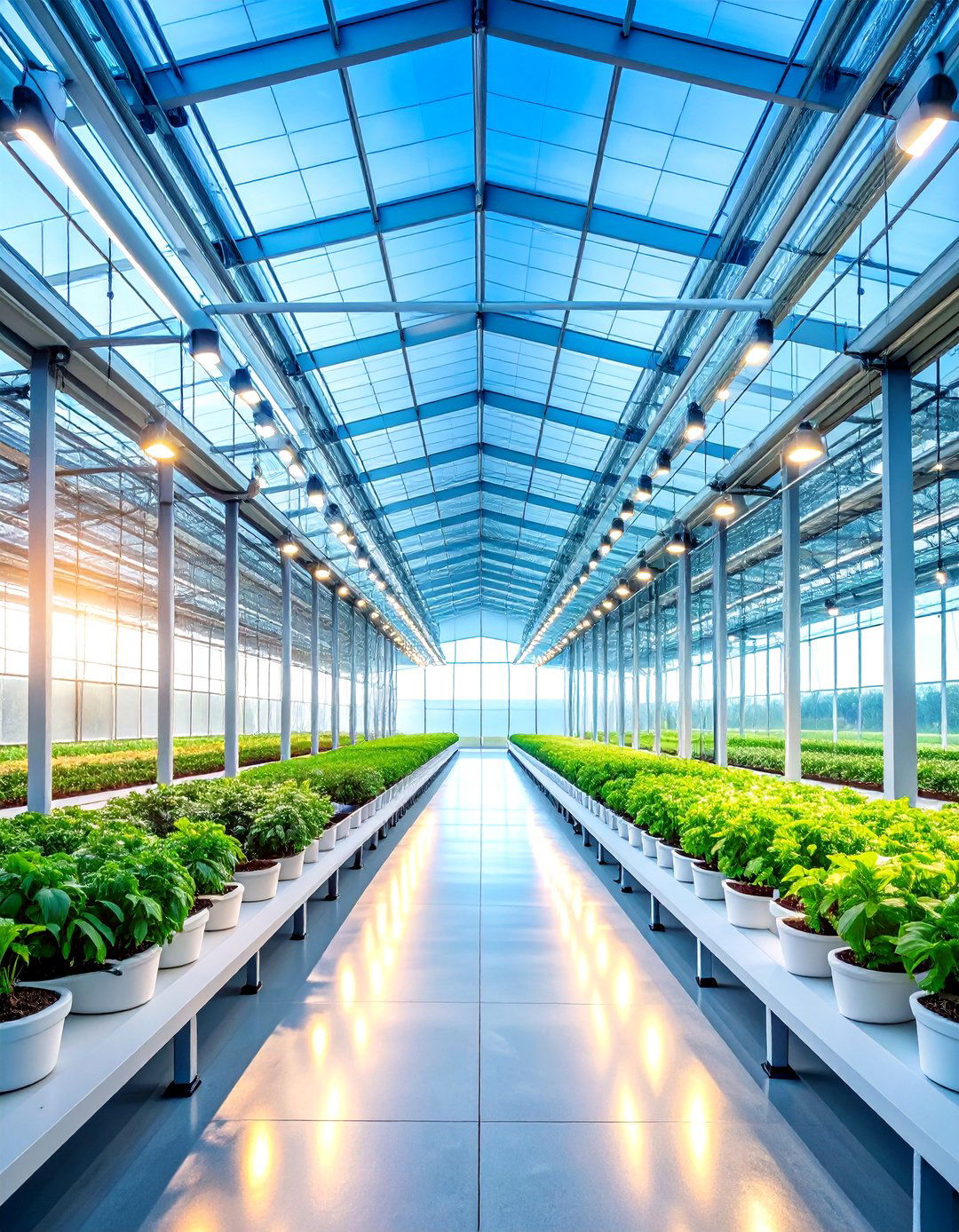
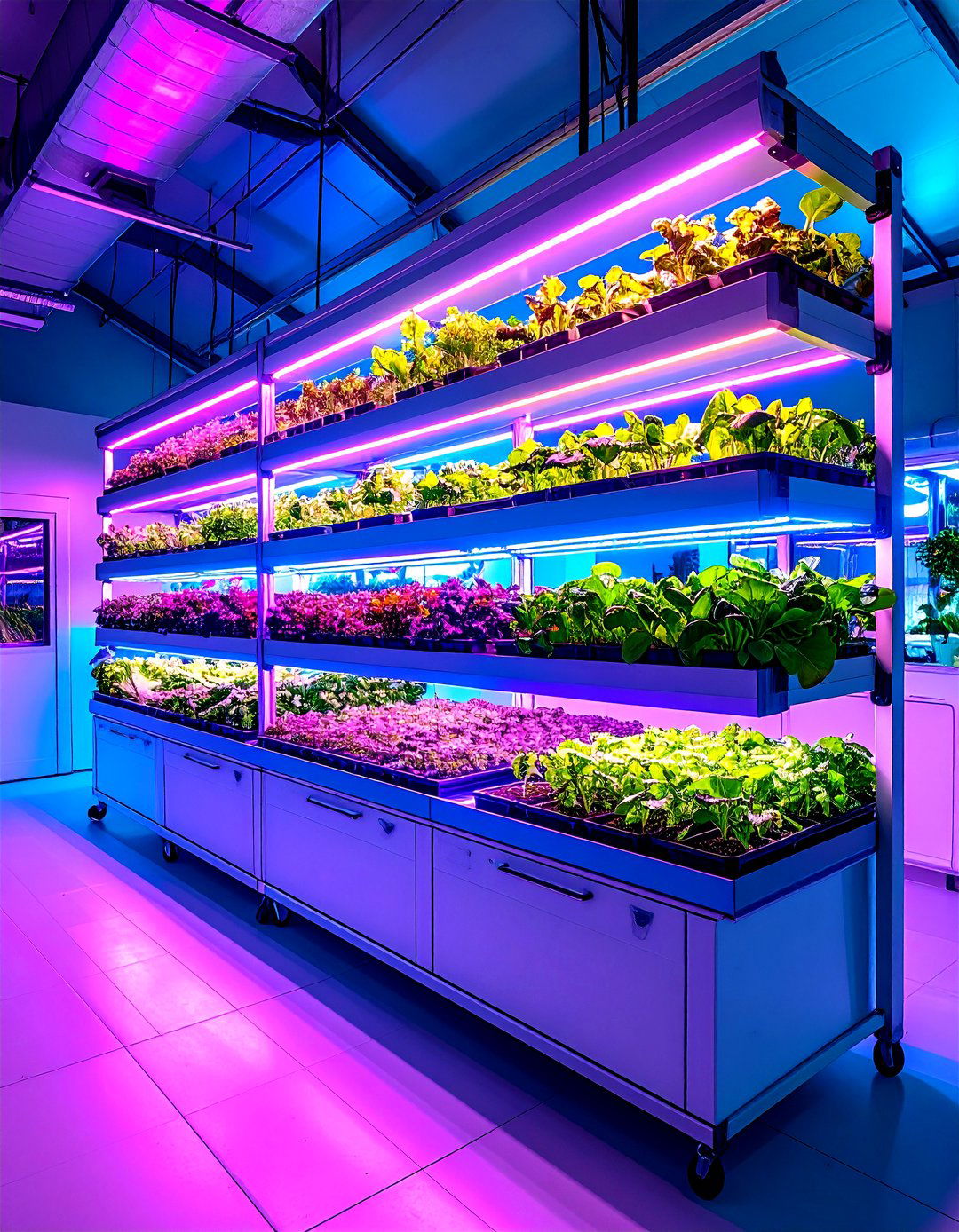

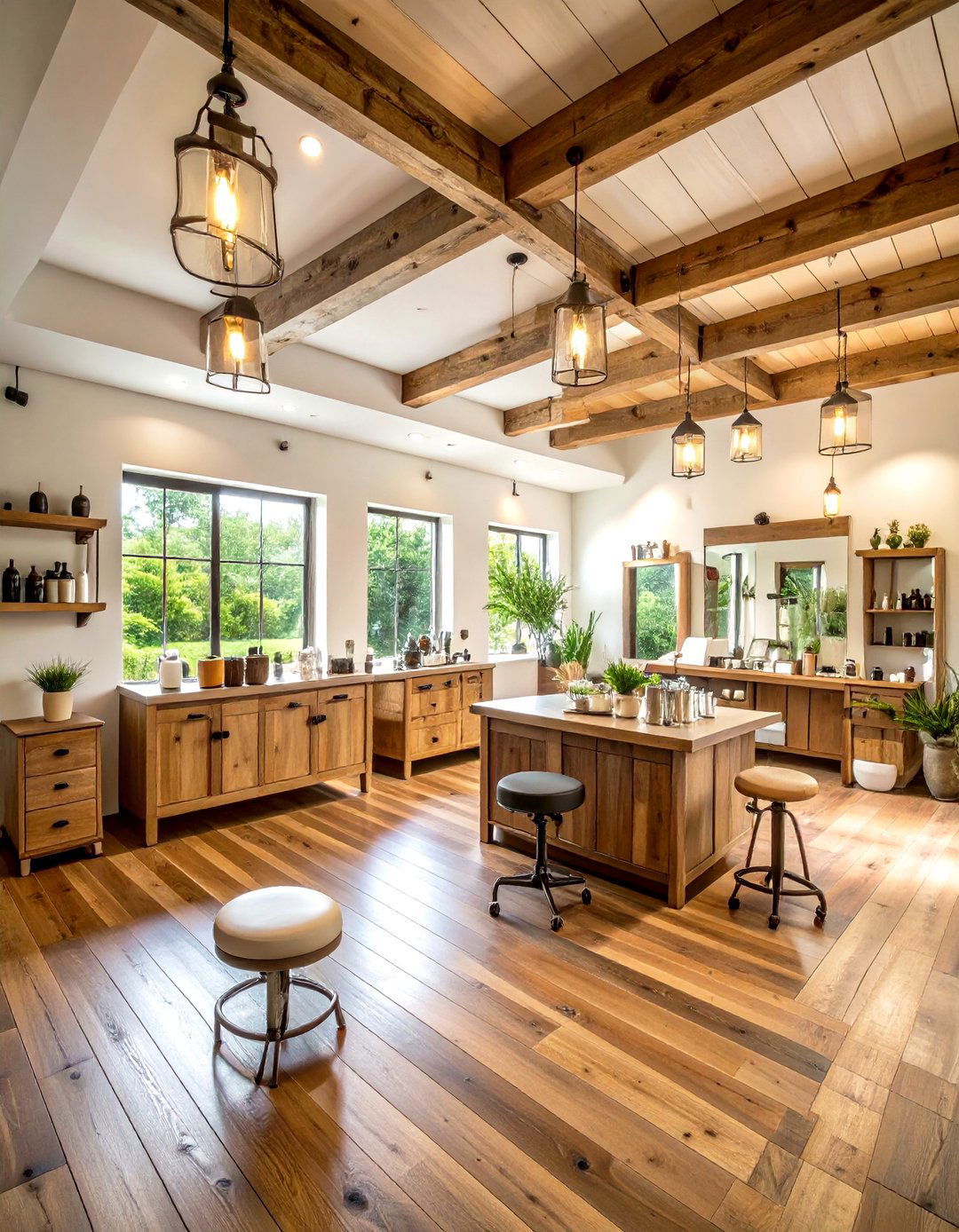
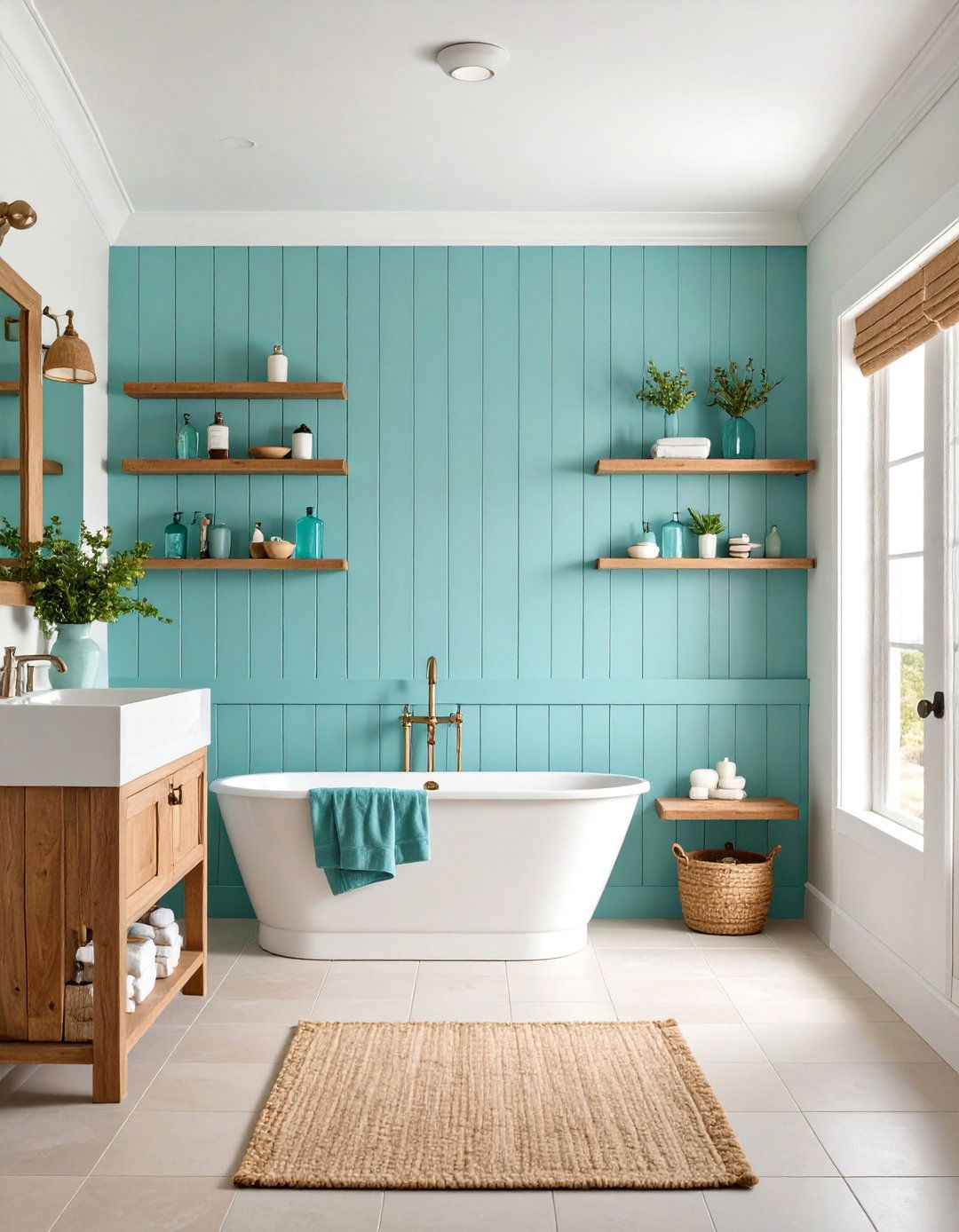
Leave a Reply